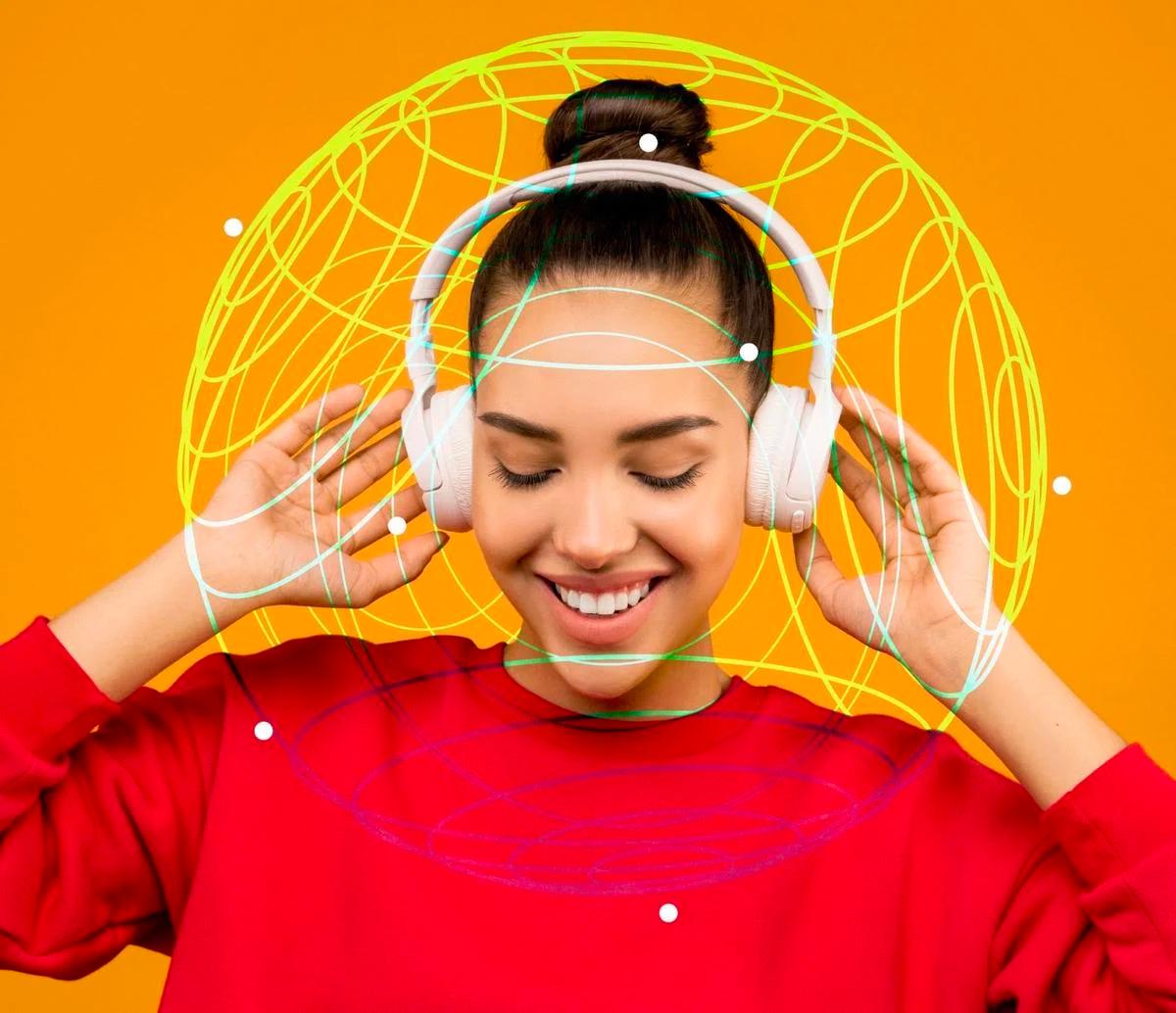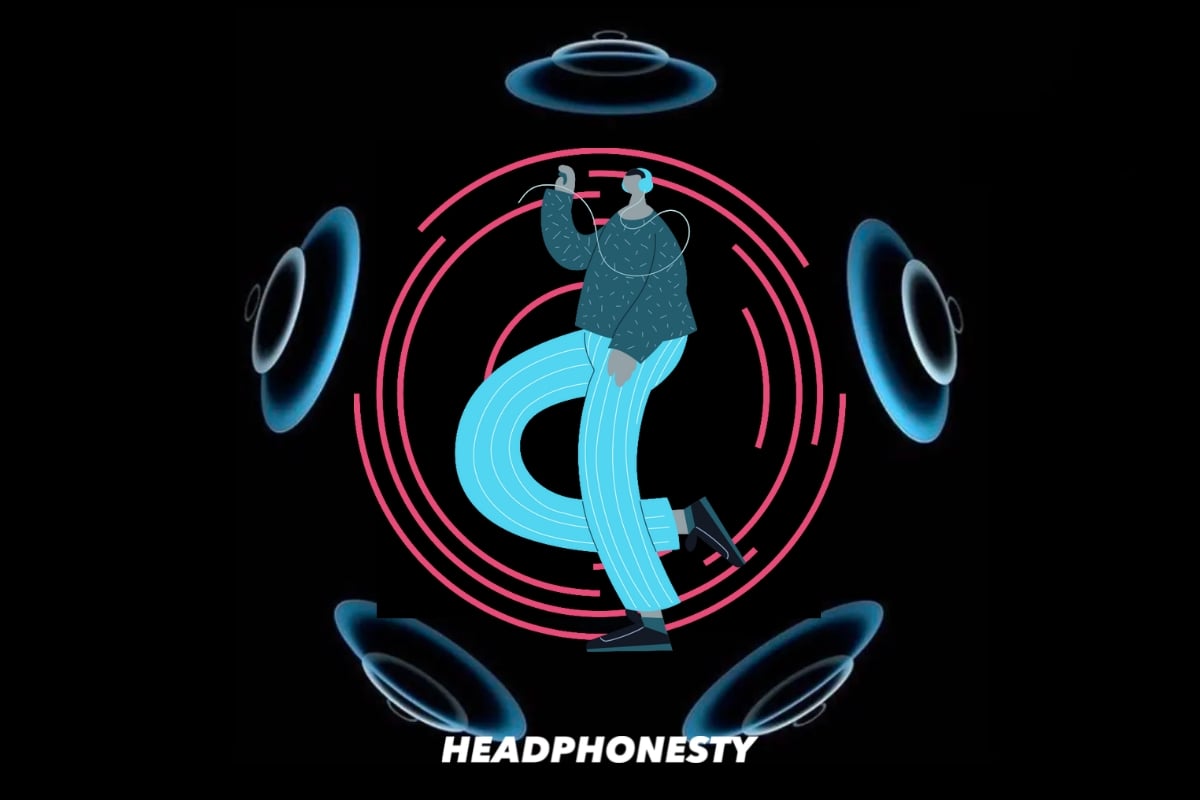Understanding and absorbing the immersive world of spatial audio
Apple made waves when they released their spatial audio features in 2020 by delivering an all-encompassing, cinema-like sound experience within the confines of headphones.
Plenty of listeners are already enjoying the feature daily, while others are still left asking: what is spatial audio? Is it really the next step forward in our everyday audio experience?
In this article, we’re covering the fundamentals of spatial audio as it applies to Apple and beyond: what it is, how it works, and how you can experience it for yourself.
What Is Spatial Audio?

Spatial Audio is an audio playback technology that creates the illusion of a 3D, 360-degree sound field around a listener.
Going beyond traditional surround sound, spatial audio incorporates lateral and vertical audio directionality. It also does not require any one particular speaker setup. In fact, as many reading this are likely well aware, Apple’s Airpods and Airpods Max are among the most common (though not the only) ways people have been experiencing spatial audio.
Apple’s spatial audio features build off established spatial formats like Dolby Atmos by incorporating head tracking on compatible headphones like Airpods or Beats’ Fit Pro.
Head tracking adds an extra immersive element to Apple’s spatial audio by adjusting a sound’s location relative to a listener’s head position. If a sound is coming from a listener’s left, for example, it will come from their front once they turn their head to the left.
In short, spatial audio formats like Dolby Atmos produce a static 3D space that Apple, in turn, uses to map additional immersive audio features like head tracking.
How Does Spatial Audio Work?
Spatial audio works by employing directional audio filters and adjusting the frequencies relayed to each ear to create the impression that different sounds originate from the left, right, below, or above a listener.
In other words, spatial audio works through psychoacoustic trickery.
In order for your ears to perceive sounds as coming from above you when they are actually coming from a headphone speaker, or even a speaker out in front of you, spatial cues for your ears are essentially artificially encoded into the audio you hear.
What You Need to Experience Spatial Audio
While it’s a near given that the most recent Apple releases feature spatial audio, other brands and companies have been amping up their production. Below is a list of devices that support spatial audio, split between Apple and others:
| Apple Devices With Spatial Audio | Other Devices With Spatial Audio |
|---|---|
|
|
Additionally, you need to play content from a supported app. Besides Apple Music and Apple TV, apps compatible with the feature include Amazon Music, Tidal, Netflix, Hulu, Disney+, HBO Max, Peacock, and more.
Finally, the media you’re interested in must also be compatible with Dolby Atmos if you want a complete spatial audio experience. The feature might not be available for older movies streaming online.
Is Spatial Audio Right for You?
For those who prioritize experiencing the cutting edge of modern audio technology, taking a dive into spatial audio is a no-brainer. It’s no exaggeration to say that it’s one of the most revolutionary and disruptive developments that the audio industry has seen in decades. Who wouldn’t want a slice of that action?
Some people, however, may still prefer more traditional stereo or surround sound formats. If you’re already heavily invested in a banging 5.1 or stereo setup, for example, you may very well prefer it to the spatial audio offerings currently on the market, and can save yourself some money.
Others are outright critical of spatial audio, calling it a gimmick or saying it sounds artificial. Going with or without spatial audio is a personal preference, with no single audio format presenting itself as an inherently superior option.
FAQ
- What is personalized spatial audio?
- What is spatialize stereo?
- How do I listen to spatial audio on airpods?
- Why is spatial audio not available?
What is personalized spatial audio?
Personalized spatial audio is a feature on Apple Airpods (1st Generation Pro, 2nd Generation Pro, 3rd Generation), Airpods Max, Beats Fit Pro, and Beats Studio Pro that optimizes spatial audio quality by tailoring audio to the way you personally hear. This is accomplished by giving a listener a quick hearing test and then calibrating the headphones accordingly.
What is spatialize stereo?
Spatialize stereo is an Apple feature for headphones that reformats traditional stereo recordings to sound like they are playing from stereo speakers positioned in front of the listener.
How do I listen to spatial audio on airpods?
If you’re listening on an iPhone or iPad, click the “i” next to “AirPods” in your Bluetooth device menu. From here, you can enable or disable spatial audio as well as head tracking.
Why is spatial audio not available?
First, check to see if you have spatial audio enabled on your headphones. If you do, and spatial audio is still not available, double-check to see if all of the devices in your audio signal chain offer spatial audio compatibility.

What a load of nonsense. Spatial audio has been around since stereo systems appeared.
Every band or film maker has sat in the mixing room placing instruments and sound effects since the had the ability to have a stereo signal.
If this was a videogame console moving the audio around in real time I’d be impressed, but they’ve getting sound that since the sound blaster realeased in the 90s.